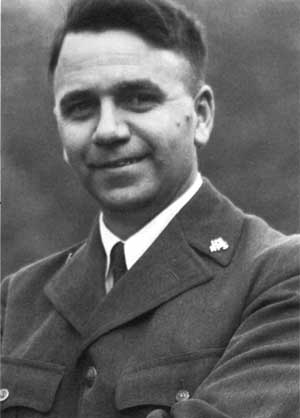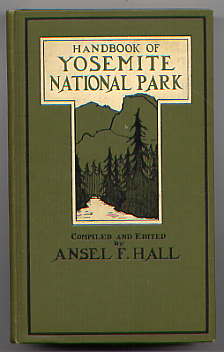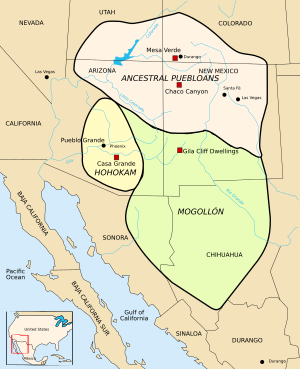Ansel Hall Ruin facts for kids
Quick facts for kids |
|
|
Ansel Hall Ruin
|
|
| Location | Dolores County, Colorado |
|---|---|
| Nearest city | Cahone, Colorado |
| NRHP reference No. | 97001418 |
| Added to NRHP | 1997 |
The Ansel Hall Ruin, also known as Cahone Ruin, is an ancient site near Cahone, Colorado in Dolores County, Colorado. It's a prehistoric ruin from the Pueblo II Period and was added to the National Register of Historic Places in 1997. This site helps us understand how ancient people lived in the Mesa Verde region.
Contents
- Who was Ansel Hall?
- Where is the Ansel Hall Ruin?
- A Look Back: History of the People
- Artifacts from the Ruin
- See Also
Who was Ansel Hall?
The Ansel Hall Ruin used to be called Cahone Ruin. It was renamed after Ansel Hall, who owned the land. He helped fund two important digs at the site in 1949 and 1950.
Ansel Franklin Hall was a naturalist who worked for the National Park Service. People say he did a lot to help the parks teach visitors about nature. He even mentored the famous photographer Ansel Adams. Hall also started a group called Mesa Verde Company. In 1933, he paid for a trip to Monument Valley to study the area.
Where is the Ansel Hall Ruin?
The Ansel Hall Ruin is in the central Mesa Verde Region. This area covers parts of southwestern Colorado, southeastern Utah, and northern New Mexico. It's bordered by the Colorado River in Utah, the San Juan River in New Mexico, and the Piedra River in Colorado.
A Look Back: History of the People
Evidence from the Mesa Verde area shows that people have lived here for a very long time. Early groups were Paleo-Indians and people from the Archaic period. Over time, they changed from hunting and gathering to becoming pueblo people.
Early Hunters: Living Off the Land
About 10,000 years ago, hunter-gatherers lived in this tough landscape. They faced deep canyons, few animals, and limited water. This made life hard and kept their hunting groups small. They were very good at finding food. They ate nuts, seeds, and fruits from wild plants. Tools from Paleo-Indians were found near Hovenweep National Monument. There are also signs of Archaic people from about 6,000 BC.
Basketmakers: The First Farmers (AD 1 to 550)
Around 2,000 years ago, people in the Four Corners region learned about maize (corn) and basketry. They learned this from traders in Mesoamerica. Growing their own food meant they didn't have to move around as much. Small groups started farming corn and squash. But they still hunted and gathered wild plants too.
They were called "Basketmakers" because they were so good at making baskets. They used baskets to store food. They even covered them with pitch to heat water or toast seeds. They also wove bags, sandals, and belts from yucca plants. These people were ancestors of the later pueblo people.
Modified Basketmakers: New Tools (AD 550 to 750)
In the next period, called Modified Basketmakers, people started making pottery. This meant they made fewer baskets. Simple, gray pottery was great for cooking and storing food. They also added beans to their farmed diet. Bows and arrows made hunting easier. They used animal hides for clothing. Turkey feathers were woven into warm blankets. Small groups built pit houses on the rim of Mesa Verde. These houses were partly underground and suggest new traditions.
Pueblo I: Building Communities (AD 750 to 900)
From sites like Mesa Verde National Park, we see big changes in this period. Pueblo buildings were now made of stone. They had windows facing south. Buildings were often shaped like U, E, or L. They were built closer together, showing stronger communities. Towers were built near kivas, possibly for lookouts. Pottery became more varied. They made pitchers, ladles, bowls, and jars. White pottery with black designs appeared, using plant-based colors. People also started managing water better. They built reservoirs and dams to save water. By AD 900, more homes were built in the Hovenweep area.
Pueblo II: A Time of Growth (AD 900-1150)
The Ansel Hall Ruin is a good example of a Pueblo II Period site. Experts believe it was built and lived in between AD 1050 and 1150. It shows how the Mesa Verde Anasazi culture changed.
Chaco Culture's Influence
At the start of the Pueblo II period, fewer people lived in the Mesa Verde region. Many had left after Pueblo I. But as farming conditions got better, people returned.
Between 1080 and 1130, the Chacoan people from New Mexico greatly influenced the Mesa Verde region.
- Chaco was a major trading hub. Its network reached far south into Mexico. This brought new and exciting goods, like Chacoan pottery, copper bells, and seashells. New ideas and people also came along these trade routes.
- The Chaco culture had special buildings called "great houses." These were large, multi-story buildings with many rooms. They often had big kivas (special rooms for ceremonies) inside. More than 225 great houses have been found in the northern Anasazi areas, including Mesa Verde. Great houses built outside Chaco Canyon were called "outliers." They were connected to Chaco Canyon by a network of roads.
Before this, most people lived in small farmsteads. These were grouped around community centers with large buildings for meetings and ceremonies. There were also storage areas for crops. Chacoan "great houses" started appearing in Mesa Verde communities around 1080. They stopped being built around 1140. A long drought then hit the region from 1130 to 1180.
The Ansel Hall Site
The Ansel Hall site had a large kiva and many ruins. This suggests it was a medium-sized village. It had about 200 rooms and 36 kivas.
At least one small part of the village was built around AD 1074. The village might have been left empty by AD 1100. This is because pottery from the 12th century hasn't been found there.
The items found at Ansel Hall show that its residents traded with people from Chaco Canyon. They also traded with other native groups and lived similarly to their neighbors.
- Tools made of Obsidian glass were found. This glass might have come from areas far away, like near Pagosa Springs, Colorado or New Mexico. This shows that ancient people traded over long distances.
- Arrow points common to Chaco Canyon were found at Ansel Hall. This shows a connection to the Chaco culture.
- Another type of arrow point, the Bonito Point, was also found. It was named after a pueblo in Chaco Canyon.
- A point named the Dolores Straight Stem point was found. It was named for the Dolores River Valley, which is near Ansel Hall.
The ownership of the Ansel Hall Ruin might change from a private owner to the Bureau of Land Management.
Pueblo III: Moving On (AD 1150-1300)
Some experts believe the Ansel Hall Ruin was also used during the Pueblo III Period. During this time, communities changed a lot. People moved from scattered farmsteads into bigger community centers. These were often at the ends of canyons or in cliff dwellings. The population in the Mesa Verde region grew a lot, reaching over 20,000 people between 1200 and 1250.
By 1300, the Ancient Pueblo People left their settlements. This was likely due to changes in climate and a lack of food. They moved south to villages in Arizona and New Mexico.
Artifacts from the Ruin
Artifacts found at the Ansel Hall Ruin are now kept at the Anasazi Heritage Center. Before that, they were at Mesa Verde National Park.
See Also




